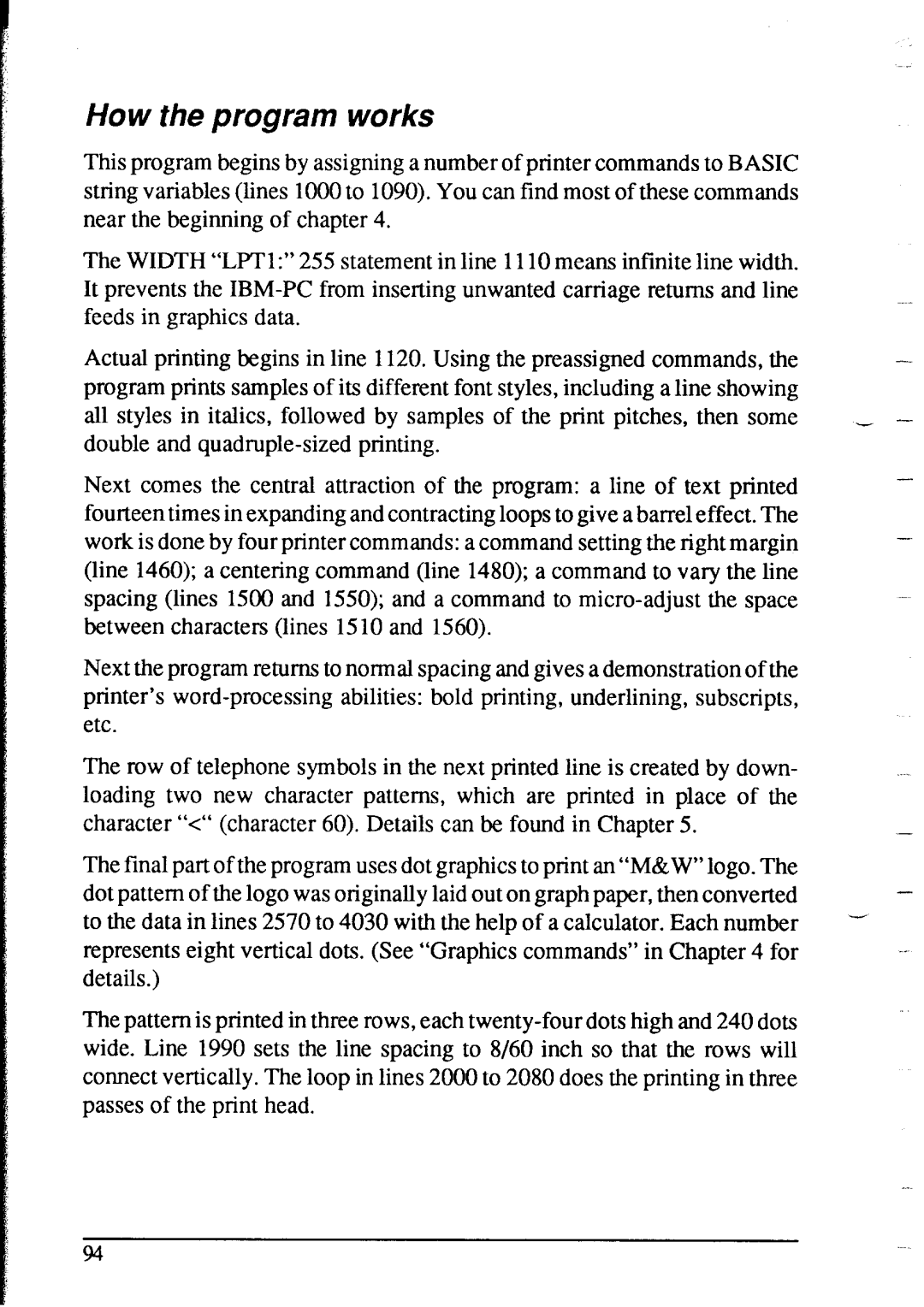
How the program works
This program begins by assigning a number of printer commands to BASIC string variables (lines 1000 to 1090). You can find most of these commands near the beginning of chapter 4.
The WIDTH “LPTl:” 255 statement in line 1110 means infinite line width. It prevents the
Actual printing begins in line 1120. Using the preassigned commands, the | - | |
program prints samples of its different font styles, including a line showing |
| |
all styles in italics, followed by samples of the print pitches, then some | _ - | |
double and |
| |
Next comes the central attraction of the program: a line of text printed | - | |
| ||
fourteen times in expanding and contracting loops to give a barrel effect. The | - | |
work is done by four printer commands: a command setting the right margin | ||
| ||
(line 1460); a centering command (line 1480); a command to vary the line |
| |
spacing (lines 1500 and 1550); and a command to |
| |
between characters (lines 1510 and 1560). |
| |
Next the program returns to normal spacing and gives a demonstration of the |
| |
printer’s |
| |
etc. |
| |
The row of telephone symbols in the next printed line is created by down- |
| |
loading two new character patterns, which are printed in place of the |
| |
character “<“ (character 60). Details can be found in Chapter 5. | - | |
The final part of the program uses dot graphics to print an “M&W”logo. The |
| |
dot pattern of the logo was originally laid out on graph paper, then converted | - | |
to the data in lines 2570 to 4030 with the help of a calculator. Each number | - | |
represents eight vertical dots. (See “Graphics commands” in Chapter 4 for | .. | |
| ||
details.) |
| |
The pattern is printed in three rows, each |
| |
wide. Line 1990 sets the line spacing to 8/60 inch so that the rows will |
| |
connect vertically. The loop in lines 2000 to 2080 does the printing in three |
| |
passes of the print head. |
|
